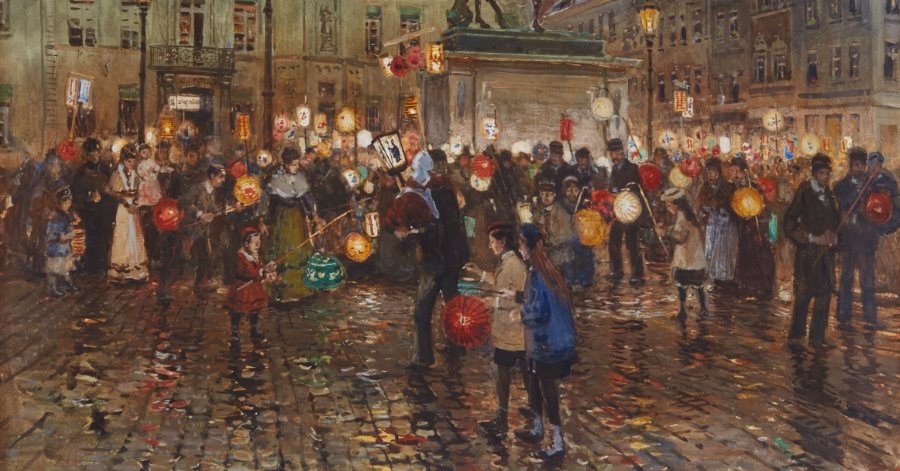
 I'm sure you've all heard of Mardi Gras in New Orleans or Carnival in Venice, and well, Fasching is Germany's Mardi Gras or Carnival. It officially began on 11.11.11 – meaning, the 11th of November (the 11th Month) at 11:11 AM, 2016, and it will end at the stroke of midnight on Fat Tuesday (or Shrove Tuesday, the day before Ash Wednesday) aka February 28th 2017. It, like many other holidays, festivities, and traditions, is based in religion as a celebration before lent and it has its roots in Catholicism and Christianity. However, it is now celebrated in many regions of Germany and by all walks of life. It has become a tradition in Germany that no longer centers around religion. Anyone who attends a Fasching party or parade will tell you that it certainly doesn't feel like it's centered around the church. It's a colorful celebration of life, with costumes, parties, drinks, dancing, music, comedy, candy and more.
I'm sure you've all heard of Mardi Gras in New Orleans or Carnival in Venice, and well, Fasching is Germany's Mardi Gras or Carnival. It officially began on 11.11.11 – meaning, the 11th of November (the 11th Month) at 11:11 AM, 2016, and it will end at the stroke of midnight on Fat Tuesday (or Shrove Tuesday, the day before Ash Wednesday) aka February 28th 2017. It, like many other holidays, festivities, and traditions, is based in religion as a celebration before lent and it has its roots in Catholicism and Christianity. However, it is now celebrated in many regions of Germany and by all walks of life. It has become a tradition in Germany that no longer centers around religion. Anyone who attends a Fasching party or parade will tell you that it certainly doesn't feel like it's centered around the church. It's a colorful celebration of life, with costumes, parties, drinks, dancing, music, comedy, candy and more.
Most towns and major cities in Germany celebrate Fasching, with the same kind of enthusiasm that we reserve for Halloween in the United States—but the traditions and history behind Fasching vary from region to region. In some areas people dress up in scary costumes and they try to “scare off the winter,” and in other regions you are meant to dress silly, not scary, but no matter where you go, you're sure to find a wonderful celebration. As you may have noticed, Fasching celebrations are a little slow to start, mostly since the focus in November and December is on Christmas, however, things really start to pick up at the end of January and the beginning of February, and soon you'll see various costumes for sale. Even if you don't plan on partaking in the festivities, now might be a good time to grab a fun Halloween costume for October.
 Though celebrating Valentine's Day has only become popular within the last few decades in Germany, there are several traditions the Germans have taken on whole-heartedly. This includes giving cards, sweet treats and flowers to their loved ones on this special day.
Though celebrating Valentine's Day has only become popular within the last few decades in Germany, there are several traditions the Germans have taken on whole-heartedly. This includes giving cards, sweet treats and flowers to their loved ones on this special day.
The origins of both the man known as Valentinus and the celebration itself are obscure. Little is known about the Roman (or Romans) who may have been a bishop in Terni or a priest in Rome. Although several legends have arisen around the Christian martyr Valentinus, there is no historical evidence that connects him to lovers or today's Feb. 14 Valentine celebration. As in the case of other Christian celebrations, Valentine's Day is more likely based on the pagan Roman fertility festival called Lupercalia that took place in mid-February. The Lupercalia only ended in 495 when it was banned by the Pope.
 Both countries do love big and colorful parties, but the traditions at home do vary a bit between the Unites states and here in Germany.
Both countries do love big and colorful parties, but the traditions at home do vary a bit between the Unites states and here in Germany.
The big rush before the party starts, and the shopping madness is international; and even in the capital of holidays, Germany, the 31st of December is a normal working day. Although most stores close early.
Once the guests arrive, the party takes off with music, good food and plenty of drinks to keep you happy. While the American party will most likely have the TV tuned to New York, for the big celebrations, Germans usually like it a little cozier with a timeless classic, the sketch “Dinner for One.” James, a clumsy Butler, trips repeatedly over the tiger’s head.

In case you haven't noticed, Germans love to party and will find whatever reason they can to have another little Fest or celebration. A Guy cutting up his coat?! Sounds like a reason for celebration! No really, let me introduce you to Saint Martin’s day:
St. Martin’s day originated in France and then spread all through Middle and Eastern Europe.
Originally only a Catholic holiday, St Martin’s Day was named after Martin of Tours, a Roman soldier who later became the third Bishop of Tours. He was known for sharing his winter coat with a poor beggar that was out in the freezing cold, so Martin took his sword and cut his coat in half, handing the other half to the cold man. St. Martin was known for being a kind hearted, and he cared for children and the poor.
Copyright Together Magazine by Uwe Warnack © 2024
Designed with by pixagentur